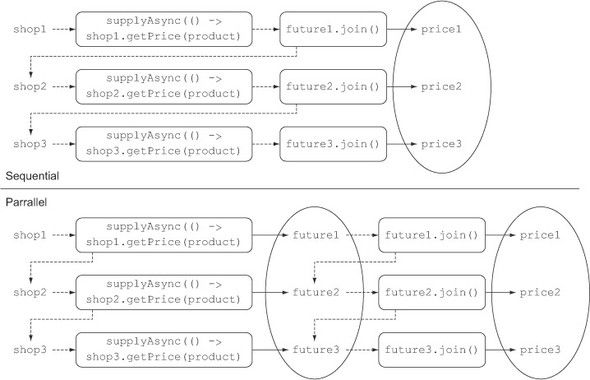Lambda表达式用法
用户范例
package com.example.study.java8.InterfaceFunction;
/**
* lambda表达式用法
*/
public class LambdaUsage {
public static void main(String[] args) {
Runnable runnable1 = ()-> System.out.println("hello");
Runnable runnable2 = new Runnable() {
@Override
public void run() {
System.out.println("hello");
}
};
process(runnable1);
process(runnable2);
process(()-> System.out.println("hello"));
}
public static void process(Runnable runnable){
runnable.run();
}
}
学习目标
一、Predicate:诊断,返回boolean类型
@FunctionalInterface
public interface Predicate
/**
* Evaluates this predicate on the given argument. * * @param t the input argument
* @return {@code true} if the input argument matches the predicate,
* otherwise {@code false}
*/
boolean test(T t);二、Consumer:消费者,没有返回类型
@FunctionalInterface
public interface Consumer
/**
* Performs this operation on the given argument. * * @param t the input argument
*/ void accept(T t);三、Function:函数有返回值
@FunctionalInterface
public interface Function<T, R> {
/**
* Applies this function to the given argument. * * @param t the function argument
* @return the function result
*/ R apply(T t);四、Supplier:生成者:返回一个对象
@FunctionalInterface
public interface Supplier
/**
* Gets a result. * * @return a result
*/ T get();详细说明
1、Predicate详细用法
范例:
package com.example.study.java8.InterfaceFunction;
import java.util.ArrayList;
import java.util.Arrays;
import java.util.List;
import java.util.function.BiPredicate;
import java.util.function.IntPredicate;
import java.util.function.Predicate;
/**
* Lambda表达式的使用:Prodicate用法
*/
public class LambdaUsagePredicate {
public static void main(String[] args) {
List<Apple> list = Arrays.asList(new Apple("red", 10)
, new Apple("red", 60)
, new Apple("blue", 40)
, new Apple("black", 30)
, new Apple("green", 80)
, new Apple("blue", 90)
, new Apple("green", 60)
, new Apple("green", 50)
, new Apple("red", 20));
//Predicate用法
List<Apple> filterList = filter(list, apple -> apple.getColor().equals("green"));
for (Apple apple : filterList) {
System.out.println(apple.toString());
}
System.out.println("============================");
//其它类似Predicate用法
//IntegerPredicate用法
List<Apple> filterByWeight = predicateByWeight(list, weight -> weight == 60);
for (Apple apple : filterByWeight) {
System.out.println(apple.toString());
}
System.out.println("============================");
//BiPredicate用法
List<Apple> biPredicateResult = biPredicateByColorAndWeight(list, (color, weight) -> {
return color.equals("green") && weight == 60;
});
for (Apple apple : biPredicateResult) {
System.out.println(apple.toString());
}
}
//1、Predicate:诊断的用法
public static List<Apple> filter(List<Apple> sources, Predicate<Apple> predicate) {
List<Apple> result = new ArrayList<>();
for (Apple apple : sources) {
if (predicate.test(apple)) {
result.add(apple);
}
}
return result;
}
//2、其它类似Predicate用法
//IntegerPredicate用法
public static List<Apple> predicateByWeight(List<Apple> source, IntPredicate intPredicate) {
List<Apple> result = new ArrayList<>();
for (Apple apple : source) {
if (intPredicate.test(apple.getWeight())) {
result.add(apple);
}
}
return result;
}
//3、带2个参数的BiPredicate用法
public static List<Apple> biPredicateByColorAndWeight(List<Apple> source, BiPredicate<String, Integer> biPredicate) {
List<Apple> result = new ArrayList<Apple>();
for (Apple apple : source) {
if (biPredicate.test(apple.getColor(), apple.getWeight())) {
result.add(apple);
}
}
return result;
}
}
2、Consumer详细用法
范例:
package com.example.study.java8.InterfaceFunction;
import java.util.Arrays;
import java.util.List;
import java.util.function.BiConsumer;
import java.util.function.Consumer;
/**
* Lambda表达式:Consumer用法
*/
public class LambdaUasgeConsumer {
public static void main(String[] args) {
List<Apple> list = Arrays.asList(new Apple("red", 10)
, new Apple("red", 60)
, new Apple("blue", 40)
, new Apple("black", 30)
, new Apple("green", 80)
, new Apple("blue", 90)
, new Apple("green", 60)
, new Apple("green", 50)
, new Apple("red", 20));
//1个参数调用
simpleUsageConsumer(list, apple -> System.out.println(apple.toString()));
System.out.println("========================");
twoArgsUsageConsumer("我买了水果",list, (apple, name)->{
System.out.println(name+",颜色:"+apple.getColor()+"\t 重量:"+apple.getWeight());
});
}
//1、一个参数用法
public static void simpleUsageConsumer(List<Apple> source, Consumer<Apple> consumer) {
for (Apple apple : source) {
consumer.accept(apple);
}
}
//2、两个参数用法
public static void twoArgsUsageConsumer(String name, List<Apple> source, BiConsumer<Apple, String> consumer) {
for (Apple apple : source) {
consumer.accept(apple, name);
}
}
}
3、Funcation详细用法
范例:
package com.example.study.java8.InterfaceFunction;
import java.util.ArrayList;
import java.util.Arrays;
import java.util.List;
import java.util.function.BiFunction;
import java.util.function.Function;
import java.util.function.IntFunction;
/**
* Lambda表达式:Funcation用法
*/
public class LambdaUsageFuncation {
public static void main(String[] args) {
List<Apple> list = Arrays.asList(new Apple("red", 10)
, new Apple("red", 60)
, new Apple("blue", 40)
, new Apple("black", 30)
, new Apple("green", 80)
, new Apple("blue", 90)
, new Apple("green", 60)
, new Apple("green", 50)
, new Apple("red", 20));
//1、2个参数调用
List<String> stringsUsageFuncation = simpleUsageFuncation(list, apple -> apple.getColor() + ":颜色");
for(String color: stringsUsageFuncation){
System.out.println(color);
}
System.out.println("============================");
//2、其它用法IntFuncation调用
List<Integer> integerList = intUsageFuncation(list, weight-> weight*20);
for(Integer i : integerList){
System.out.println(i);
}
System.out.println("==============================");
//3、3个参数调用
Apple newApple = threeeUsageFuncation("彩色", 178, (newColor, newInteger) -> {
return new Apple(newColor, newInteger);
});
System.out.println(newApple.toString());
}
//1、2个参数 简单用法
public static List<String> simpleUsageFuncation(List<Apple> source, Function<Apple, String> function){
List<String > result = new ArrayList<>();
for(Apple apple:source){
result.add(function.apply(apple));
}
return result;
}
//2、其它用法IntFuncation
public static List<Integer> intUsageFuncation(List<Apple> source, IntFunction<Integer> function){
List<Integer > result = new ArrayList<>();
for(Apple apple:source){
result.add(function.apply(apple.getWeight()));
}
return result;
}
//3、3个参数用法
public static Apple threeeUsageFuncation(String newColor, Integer newWeight, BiFunction<String, Integer, Apple> biFunction){
return biFunction.apply(newColor, newWeight);
}
}
4、Supplier详细用户
范例:
package com.example.study.java8.InterfaceFunction;
import java.util.function.Supplier;
/**
* Lamdba表达式之Supplier用法
*/
public class LambdaUsageSupplier {
public static void main(String[] args) {
//范例1
Supplier<String> stringSuppier = String::new;
System.out.println(stringSuppier.get().getClass());
System.out.println("=====================");
//范例2
Apple apple = createApple(() -> {
return new Apple("五颜六色", 200);
});
System.out.println(apple.toString());
}
public static Apple createApple(Supplier<Apple> supplier){
return supplier.get();
}
}
注意:参数类型
package com.example.study.java8.InterfaceFunction;
/**
* 参数类型注意
*/
public class ArgsCase {
public static void main(String[] args) {
int i =0;
Runnable runnable = new Runnable() {
@Override
public void run() {
//i会报错提示:
//Variable 'i' is accessed from within inner class, needs to be final or effectively final
// i++;
}
};
i++;
//Lambda表达式
Runnable runnable1 = ()->{
//i同样报错提示:
//Variable used in lambda expression should be final or effectively final
// System.out.println(i);
};
i++;
}
}






评论 (0)